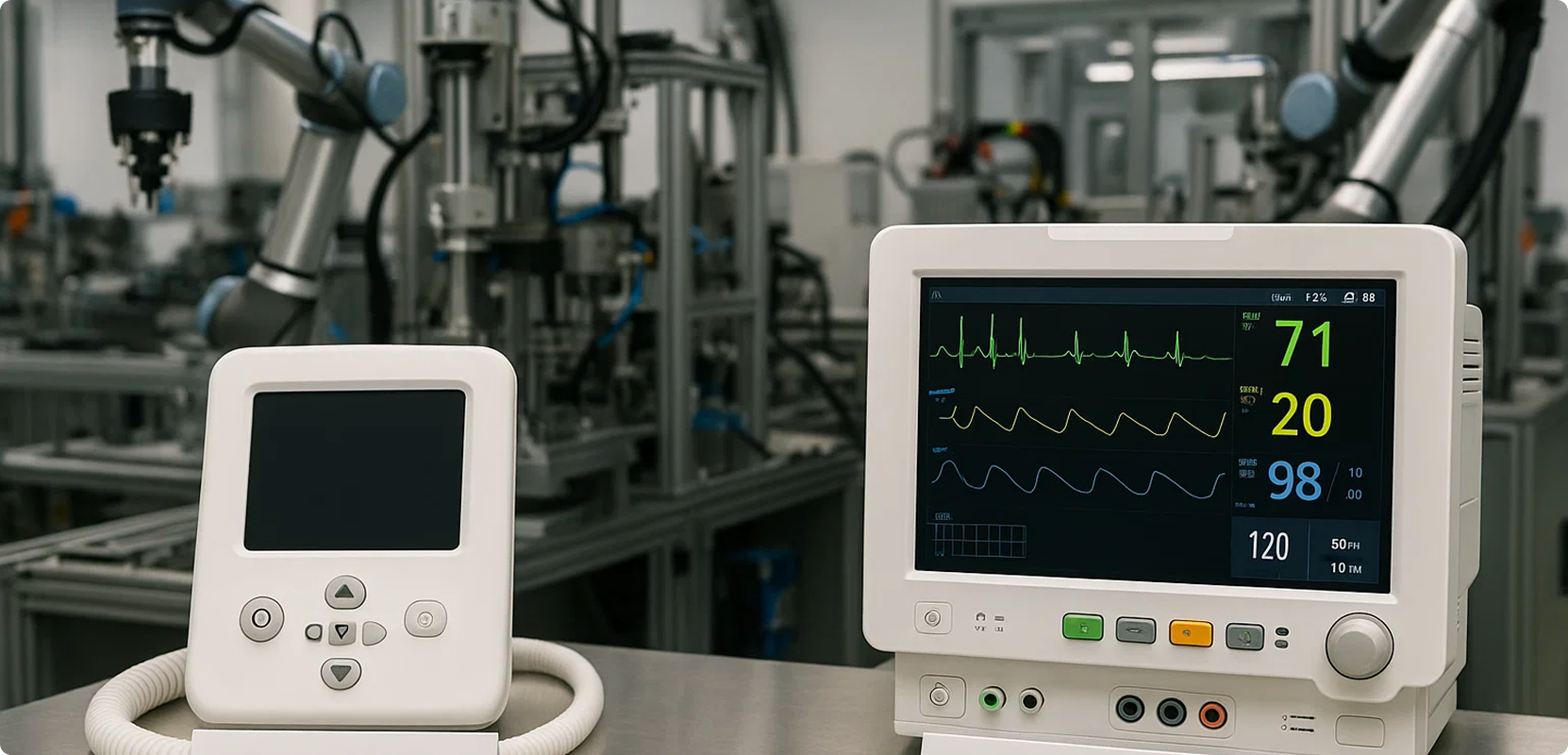The FDA classifies medical devices based on risk to patients, with Class I being the lowest and Class III the highest. Class II and Class III devices — such as infusion pumps, orthopedic implants, or cardiovascular catheters — carry greater patient risk, requiring more stringent design, testing, and postmarket controls. These higher classifications trigger more robust inspection expectations under FDA guidelines, reflecting the critical role these devices play in patient outcomes.
In Class II and Class III medical device testing a single missed defect can mean the difference between saving a life and losing one, or perhaps facing a costly, reputation-damaging recall. These are the highest-risk categories under FDA regulations — devices that sustain life, support critical procedures, or remain implanted for years. According to the FDA’s device classification guidelines and overview of regulatory controls, these classifications demand elevated design, testing, and documentation standards to protect patient safety and uphold trust.
To meet these expectations, the FDA enforces stricter inspection protocols, including validated acceptance sampling plans and meticulous record-keeping. For original equipment manufacturers and contract manufacturers, that means tighter inspection thresholds, alignment on pass/fail logic, and audit-ready documentation, often under aggressive timelines — all without slowing production.
The challenge is balancing speed with uncompromising accuracy. Doing so requires inspection systems that can match the sophistication of the devices themselves, capable of delivering consistent, defensible results that meet both FDA scrutiny and patient safety expectations.
Understanding Class II vs Class III Medical Devices
Medical device classification isn’t just a regulatory label—it dictates the level of rigor your quality assurance processes must meet. As devices increase in complexity, so do the expectations for documentation, traceability, and performance validation.
These classifications directly affect quality expectations:
- Class II devices typically require special controls in addition to general manufacturing requirements.
- Class III devices often demand premarket approval (PMA), including extensive testing, validation, and clinical data.
For QA teams, this means adapting workflows to meet higher documentation and performance validation requirements. Inspection systems must capture and store detailed defect data, ensure repeatability across shifts and sites, and create an auditable trail that meets both OEM and FDA demands. The shift from basic inspection to fully traceable quality assurance is not optional, it’s a regulatory and operational necessity.
For more on how device complexity influences inspection requirements, see 3 signs it’s time to upgrade your inspection process
FDA Acceptance Sampling Medical Devices: The Bar is higher for Class II and Class III
For Class II and Class III devices, inspection isn’t just a quick visual check, it’s a process that must be statistically validated and built to withstand regulatory scrutiny. The FDA requires statistically sound acceptance sampling plans to ensure defect thresholds remain within allowable limits, making these standards the cornerstone of compliance for high-risk device manufacturing.
Inspection processes must also be repeatable, documented, and traceable across product lines to ensure consistent quality regardless of production site, shift, or operator. Every inspection outcome must be tied to a verifiable record, complete with defect images, acceptance criteria, and decision rationale — all ready for immediate audit.
Manual inspection methods, while still common, often struggle to deliver this level of consistency, especially at scale. Human inspectors can face fatigue, subjective interpretation, and inconsistent record-keeping, leading to missed defects and elevated compliance risk. As volumes scale, the limitations of manual methods become a bottleneck, slowing throughput and threatening both quality and compliance.
5 ways automated inspection is transforming critical component and medical manufacturing shows how advanced inspection tools close those gaps.
High Quality standards affect OEMs and CM
High-risk devices don’t just raise the bar for inspection, they complicate relationships between OEMs and their contract manufacturing partners.
For OEMs, the burden includes validating incoming components from multiple vendors, monitoring defect trends across batches and geographies, and preparing for unannounced audits with complete inspection records. These responsibilities add complexity, extend timelines, and require significant coordination across quality, engineering, and operations teams.
For CMs, the challenge lies in hitting tighter quality tolerances while demonstrating inspection consistency and compliance to the OEM’s defined standards. This often requires investment in specialized equipment, alignment with OEM-specific QA logic, and continuous performance tracking to maintain trust. It also means absorbing the cost of rejected batches, rework, or returned inventory which can be a significant financial burden.
When inspection standards differ between partners, misalignment is inevitable, and the result is often delayed shipments, batch rejections, or strained supplier relationships. In some cases, a single rejected batch can cost $600K-$2M+ in logistics, rework and re-sterilization fees, while delaying product availability by 2-4 weeks. Closing that gap demands a shared, transparent approach to QA that aligns expectations early and maintains them throughout production.
For insights on how to reduce these tensions, see The ROI of automated inspection in manufacturing.
High Quality standards affect OEMs and CM
AI-powered visual inspection offers a path forward, one that delivers both regulatory rigor and operational efficiency.
With AI inspection systems — like Akridata’s Vision Assist and Vision Copilot — manufacturers can:
- Catch surface defects consistently across batches, shifts, and sites, even those that human inspectors miss. This ensures that surface defect detection is accurate and uniform, regardless of production conditions, and removes the variability that can occur with manual inspection.
- Standardize pass/fail logic across OEM and CM teams, reducing interpretation errors and improving traceability across vendors and sites. By deploying the same inspection models in multiple facilities, manufacturers create a shared quality baseline that eliminates ambiguity and strengthens supplier-OEM alignment.
- Automatically log inspection results, images, and decisions for audit-ready traceability. These digital logs are timestamped, searchable, and securely stored, supporting FDA audits and helping ensure QA procedures are both defensible and repeatable.
In practice, this means every inspection becomes a data point in a continuous quality improvement cycle. It supports statistical process control and enables rapid root cause analysis, giving quality leaders real-time oversight to spot trends before they become problems. When paired with enterprise oversight tools like Akirdata Command, this approach also enables quality leaders to align expectations across manufacturing partners and geographies — building a more resilient, auditable QA chain that stands up to Class II and Class III device scrutiny.
Ready to get ahead of quality challenges before they hit your production floor? Our latest report Closing the QA Gap: Why Medical Device OEMs Must Shift Quality Upstream reveals how industry leaders are:
- Cutting batch rejections with earlier, more precise defect detection
- Building traceable, audit-ready QA chains that simplify compliance
- Aligning OEM-CM standards to prevent costly miscommunication
- Leveraging AI-powered inspection to protect margins and accelerate delivery



No Responses